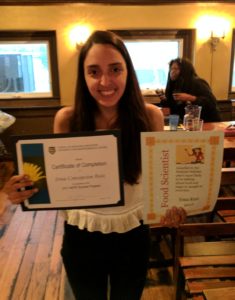Lots of things happening in the lab this spring…
(1) We hired a new technician who will be starting after Memorial Day.
(2) Congratulations to Jimmy Zhang (MSTP student), who got an F30 fellowship funded. Now begins the fun process of divesting from an AHA fellowship that he got funded late last year. That in itself involved extrication from his inclusion on a training grant beforehand. First world problems.
(3) Congrat’s also to Dr. Sergiy Nadtochiy, who has been promoted to Assistant Professor (tenure track) in the Department of Neurology. Sergiy is now a qualified anatomy instructor in the medical school and a key teacher in the HSF (human structure and function) physiology course. Luckily for us he still gets to hang out in the lab’ and do experiments 20% of the time.
(4) The competing renewal application for R01-HL-071158 received a 12th percentile score. Current NHLBI payline is 15%, so assuming nothing crazy happens* between now and the end of the fiscal year, we’ll hopefully be receiving a notice-of-award later this summer. (*not guaranteed given the current state of affairs in Washington DC).
(5) Due to the above, the money we had been planning to use for a no-cost-extension, is now planned to be used for the purchase of a refurbished mass-spec’. We’re hoping to take delivery soon of a ThermoScientific TSQ Quantum Access Max, which will be hooked up to or existing Shimadzu LC rig to give us an in-house LC-MS/MS capabilities, for metabolomics and other small molecule analysis.
(6) Our review on mitochondrial K+ channels is still not out yet. Apparently Biochemical Journal doesn’t publish review articles, even on-line, until they’re given page numbers in the print version of the journal.
(7) Our paper in JBC last year was essentially vindicated by a new paper in Nature Chemical Biology, but the authors chose not to cite us, which is kind of not nice.
(8) We’re getting a GEBS summer scholar student for this year, for June and July.
(9) Paul gave a talk at the Biopysical Society annual meeting in New Orleans in February, and at Medical College of Wisconsin in April. Additionally I had a very enjoyable visit to the Biological Sciences Department at LeMoyne University in Syracuse, to discuss our research and PhD programs with their really bright undergrads.
(10) Several members of the lab’ will be attending/presenting at the APS Physiological Bioenergetics meeting in San Diego this August.
(11) Lots of progress (retractions etc.) on various scientific misconduct cases I’m involved with (Saad, Aggarwal, Lee). Sadly, many other cases reported on PubPeer (such as this one) have yet to be dealt with by the journals despite multiple attempts at badgering them to do the right thing.
(12) Paul may or may not have been involved in discussions with various reporters who’ve published some critical pieces about certain scientists this spring. There’s more to come on some prominent players in this area!
(13) After some procrastination and a original idea to go on hiatus, UMDF decided that, after all, they were going to have a grant program this year. So, instead of the usual cycle spread over 6 months (letters-of-intent, triage, review, invite full applications, triage, review, in-person meeting, council, awards), we’re doing a condensed format (<2 months total) with a targeted RFA. So far it’s been going well despite the short time-line. Hopefully will reap rewards down the line for mito’ patients.
(14) Papers to come this summer… Owen’s paper on the Slo2.1-/- mouse. Yves’ paper on mitoUPR and cardioprotection. Jimmy’s paper on succinate in cardiac ischemia. Sergiy’s paper on lysine acetylation and hydroxyglutarate. I should stop updating this post and go do some writing!


